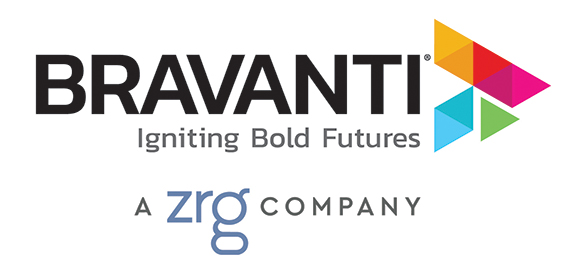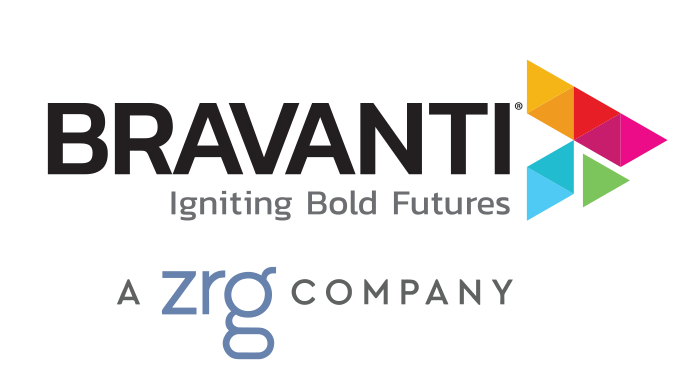By Bravanti
After a tumultuous year in 2020, millions around the world yearned for a calmer, more predictable 2021. For most of us, that did not happen.
U.S. markets swung from the highest unemployment rates on record in 2020 to labor shortages and mass resignations in 2021. Global supply chains are at a near-standstill and inflation is at a 30-year high. The metaphorical whiplash from 2020 to 2021 has left many reeling and wondering how to move forward with any semblance of certainty.
We’re living in an increasingly VUCA environment and facing a prolonged period of uncertainty. Organizations must leverage all available resources to develop business and talent strategies that address the current environment and a wide range of potential future outcomes.
So, how do you do that? You start with an HR-driven business strategy.
What is an HR-driven business strategy?
At Bravanti, we support the entire spectrum of talent development: leadership development, executive coaching, and outplacement and career transition. This wide range of expertise allows us to regularly work with every member of the C-Suite, as well as business unit leaders and human resources professionals.
Fortunately, in recent years many senior HR executives have gained a seat at the leadership table. But one thing we’ve noticed in our work is how under-leveraged Human Resources sometimes is at the strategic level. Sales, finance, operations—we often see these functions tackling a variety of problems internally when they could be leaning more into their relationships with HR to solve problems more effectively.
Why? Because unlike like any other function within an organization, HR is ubiquitous, overlapping into every department at every level. In an aligned organization, HR strategy is a direct reflection of every element of the overarching business strategy. But it isn’t merely enough to have HR reflect the business strategy; HR and talent development must play an integral part in shaping and defining the business strategy.
An HR-driven business strategy successfully leverages human resources at the highest levels of the organization by integrating its uniquely universal elements into all organizational initiatives and prioritizing talent as one of the organization’s most critical assets.
How HR Strategy Supports Business Strategy in 2022
In addition to the standard areas of collaboration with HR, such as new employee onboarding, employee satisfaction, and L&D, executives can leverage HR into the overall 2022 business strategy in many ways.
Retain and promote high potentials
The Great Resignation is a defining outcome of the global pandemic, taking many by surprise despite some early warning signs.
For years, organizations have asked workers to do more with less while taking on roles and responsibilities that often fall far outside their job descriptions. And even as wages stagnate and profits climb, studies have shown that salary isn’t the only defining criterion for Millennials and Gen Z (though still important). For the next generation of leaders, employee satisfaction is paramount and is borne from a variety of factors.
One such factor is career mobility and transparency. The recent Career Progression Survey from Lattice revealed that 43% of surveyed employees felt that their career progression at their current jobs has either completely stalled or significantly slowed down during the pandemic. The same study shows that an astounding 54% of employees surveyed are either actively looking for a job now or would consider looking for a job in the next year. Stemming attrition and retaining talent are critical for productivity and forward momentum for an organization, and therefore play directly into a company’s overall business strategy. HR strategies for career development can help establish career transparency and internal mobility as a core deliverable in the employee-employer relationship while simultaneously supporting leadership pipeline and succession planning needs.
Professional development is also a crucial component of any successful retention strategy. From technical training and career development to one-on-one coaching and peer cohort learning, there are a myriad of ways organizations can invest in their talent to develop and ultimately retain valuable workers and high-potential leaders. Functional leaders should partner with HR to design continuous learning and development opportunities and integrate them into overall business strategies. This is a win-win for everyone involved.
And finally, we mustn’t forget the most widely discussed employee demand arising from the pandemic: flexibility. After 18+ months of remote work, many employees are resisting returning to the office at all, or demanding more flexible and accommodating work arrangements, ranging from shorter work weeks to work-from-home opportunities, to limits on after-hour communications. Any business strategy must now include smart ways to balance the needs of employees with the needs of the organization going forward, or what we call shared success.
Compete to win top talent in a full employment market
Due to some of the previously mentioned market conditions and challenges, companies everywhere are struggling to attract talent in today’s employment market.
While some industries and functions are struggling more than others, the full employment market is causing headaches worldwide and C-Suite and HR executives are working overtime to overcome these challenges.
Fortunately, many of the strategies to improve retention will serve to also attract talent if incorporated into hiring strategies and compensation packages.
Additionally, when competing for talent in a tight market, a strong employer reputation is a key differentiator. In the first few months of the pandemic, companies everywhere strained to preserve resources and maintain operations in a continuously evolving environment. For many, this resulted in layoffs and furloughs that would have a lasting negative impact on their employer brand. Others are struggling with poor employer reputation for other reasons. Regardless of the circumstances, your talent strategy must be built upon a realistic assessment of your employer reputation.
Once you’ve established a baseline understanding of your employer reputation, HR and other executive leaders should partner to analyze organizational initiatives for the upcoming year to identify talent gaps, work together to determine what is and isn’t working in attracting needed talent, and develop talent strategies accordingly.
Plan for contingencies in today’s volatile environment
If nothing else, the past 18 months have taught us to prepare for the unimaginable, and those who do this successfully are far more likely to weather the inevitabilities of future change.
Now is the time for C-Suite teams, including senior HR executives, to reflect on the lessons learned from the previous two to five years and identify 2022 contingencies based on upcoming organizational initiatives, internal/external dynamics, and whether certain factors are within their control.
2020 and 2021 were difficult years (to say the least) but the trials and tribulations people and companies have endured can at least help to establish a baseline understanding of what could go wrong. This will ensure that your organization is better equipped to move forward courageously in 2022.
Assess your organization’s culture and readiness for change
The importance of a unified organizational culture is more critical than ever in today’s rapidly changing business environment. But it’s important to remember that culture goes beyond a set of behaviors, expectations, and common goals; it defines a workplace community, a community that should reflect the company’s deep-held values and beliefs. Understanding these subtle nuances of corporate culture are a key responsibility of HR and a core tenet of a solid business strategy.
A culture assessment can help you take stock of your workplace culture and how ready you are for change based on the values, norms, and behaviors of your workplace. It can provide you with strengths and areas of improvement based on best practices across industries. As a result, your business strategy will be informed by real data on your organizational culture rather than vague estimates or perceptions.
Manage and communicate change effectively
According to Gartner, the typical organization today has undertaken five major enterprise-level changes in the past three years — and nearly 75% expect to multiply the types of major change initiatives they will undertake in the next three years. When change occurs, it can be a significant disruptor to your organization—but it doesn’t have to be.
As unavoidable as change may be, the best change management strategies leverage the reputation and insights of HR to improve success rates. High-performing HR leaders and departments have a finger on the pulse of the organization, possessing intimate knowledge of culture, employee satisfaction and more, all of which should inform any change management initiatives.
Additionally, HR is a vital contributor to managing the company reputation, from both an internal and external perspective, making it a key player in developing organizational change strategies.
And finally, successful change initiatives are driven by open, transparent communications with stakeholders—something HR can lead with the strategic direction of the business in mind.
Winning in 2022 with an HR-driven business strategy
For many organizations around the world, 2022 holds a lot of promise—and a lot of unknowns. While many factors are outside of our control, there are things you can do as an organization to succeed in 2022.
With an HR-driven business strategy, your organization can attract and retain top-talent while cultivating a strong, agile company culture that is insulated from disruption and volatility, positioning you to capitalize on opportunities in a whirlwind market.
Develop an HR-driven business strategy and go forward bravely to make 2022 the strongest year yet!
To learn more about Bravanti and our expertise in Executive Coaching, Leadership Acceleration, and Outplacement/Career Transition solutions, contact us here.
Content Related to Aligned and Defined: Winning in 2022 with an HR-Driven Business Strategy
5 Ways HR Can Impact Business Strategy
Increase the Odds of M&A Success with a Smart Talent Strategy

